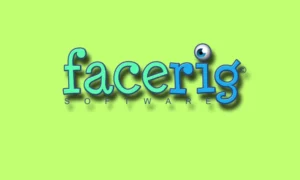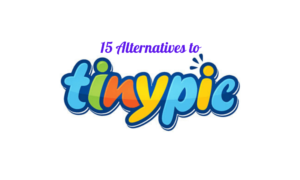Incredible technological advancements have made telemedicine a reality, defying previous doubts. In the upcoming months of 2025 can expect even more remarkable breakthroughs and technological trends in the field of healthcare, paving the way for further progress and innovation.
Based on the 2022 Future of Healthcare Report, we can expect more advancements in digital technology and higher patient expectations in the coming years. The report also highlights the rise of flexible healthcare delivery systems and increased competition in the healthcare industry. Payer organizations are aiming for digital transformation to make healthcare more affordable and personalized for everyone.
The changes brought upon by the pandemic and the subsequent rapid digital transformation in the healthcare industry show how crucial it is for your business to stay informed about the developments that can impact your business positively. Factors such as challenges, lifestyle changes, longer lifespans, healthcare system evolution, and digitization contribute to the dynamic healthcare landscape. By identifying upcoming trends, organizations can analyze and address inconsistencies and gaps in the industry.
Additionally, understanding the intentions of key players in the healthcare sector can provide insights into the potential revolution brought by healthcare technology trends.
Emerging Technologies and Trends Highlighting the Future of Healthcare IT in 2025
1. Artificial Intelligence (AI)
AI is transforming the healthcare sector by offering a wide range of applications that can effectively analyze medical images, predict health outcomes, and provide virtual assistants. The use of machine learning algorithms allows healthcare professionals to make accurate diagnoses, create personalized treatment plans, and streamline healthcare operations for enhanced efficiency.
UCLA researchers have developed an innovative Virtual Interventional Radiologist (VIR) by merging chatbot technology and AI. This cutting-edge system supports patients in self-diagnosis and aids physicians in accurately diagnosing patients, revolutionizing the field of radiology. In 2025, we expect to see more projects and advancements in AI-driven chatbot symptom checkers for healthcare, offering innovative ways to support patients and healthcare professionals in the diagnostic process.
Related: What Impact Will the IoT Have on Healthcare Sector?
2. Blockchain
By implementing blockchain in healthcare solutions, companies can provide a secure and transparent way to exchange health data, protect patient privacy, and improve data interoperability. It also streamlines the management of patient records, clinical trials, supply chain management, and insurance claims processing.
The global blockchain in healthcare market was valued at $1.97 billion in 2022 and is expected to witness a CAGR of 68.40% from 2023 to 2030. The increasing market share of blockchain technology in the medical field can be attributed to the increasing demand for robust solutions that can tackle challenges like data breaches, malware attacks, drug counterfeiting, etc.
3. Internet of Medical Things (IoMT)
The Internet of Medical Things (IoMT) is a significant trend in healthcare technology for 2025. It involves connecting medical devices, wearables, and sensors to cloud computing systems, enabling seamless data integration. IoMT is highly sought after by organizations, especially in mobile applications for healthcare and wellness.
Wearable devices like pulsometers and smartwatches are popular examples of collecting vital data such as heart rate, temperature, and blood pressure. Healthcare providers can use this data for accurate analysis, diagnosis, and treatment, thus, making wearables a promising technology for the future of healthcare.
Also Read: How AI Chatbots Are Digitizing Patient Care
4. Nanomedicine
Nanomedicine, which uses nanotechnology in medicine, is a promising field that shows great potential in improving healthcare. We can anticipate significant progress in its applications for diagnostics, drug delivery, and regenerative medicine in the coming few years.
Nanotechnology has the potential to create precise diagnostic tools like nanosensors that can detect diseases early on. Recent studies also suggest that researchers are currently investigating the use of nanofibers and nanoparticles in regenerating damaged tissues and organs. Thus, we can expect exciting developments in the field, such as self-replicating organic robots that can offer potential benefits in cancer detection.
5. Data Analysis and Predictive Modeling
In the healthcare industry, advanced analytics techniques play a crucial role in analyzing large amounts of data to gain valuable insights. Predictive modeling is also a powerful tool that allows healthcare organizations to identify diseases at an early stage, manage population health, and create personalized treatment plans.
By using predictive analytics, healthcare providers can take proactive measures and achieve better health outcomes for their patients. These techniques are capable of simplifying informed decision-making, thereby improving patient care and ultimately saving millions of lives.
See Also: How Medical Video Production Increases Institutional Trust
6. Cloud Computing
Cloud computing is a technology that offers flexible storage and computing capabilities for managing vast amounts of healthcare data. It allows healthcare providers to securely share patient information, access data remotely, and collaborate with other professionals.
By leveraging cloud computing solutions, healthcare organizations can ensure timely and coordinated delivery of care, improving patient outcomes. It is one of the most cost-effective solutions for storing and managing data that also enables scalability as per the increase in healthcare data.
7. Cybersecurity
With the increasing digitization in the healthcare industry, it is essential to have strong cybersecurity measures in place to keep patient information safe from cyberattacks. Healthcare organizations are taking major steps to enhance the security of confidential patient data by investing in secure infrastructure, using encryption technologies, and complying with regulatory standards such as HIPAA.
These measures not only help in protecting patient privacy and ensuring that sensitive data remains confidential but also instill trust in patients and maintain the integrity of the digital systems.
8. AR/VR
Virtual Reality (VR) and Augmented Reality (AR) are other innovative IT trends that are making a significant impact in the healthcare field. These computer-generated environments are being used to enhance patient recovery and improve hospital management. Medical professionals can simulate various scenarios or experiences using VR headsets, enabling them to provide better care.
According to a report by Fortune Business Insights, the global healthcare VR ecosystem is expected to witness a market share of $25.2 billion by 2030. The increasing market size typically indicates the increasing adoption and potential of these technologies in the healthcare industry.
Related: How Can We Reduce the Effect of Screen Time?
Conclusion
Healthcare IT trends are essential for healthcare organizations and providers to meet evolving needs. These trends address security concerns and improve data management, leading to better patient outcomes and reduced costs.
Embracing these technology trends enhances operations, increases revenue, and delivers higher-quality care. Ignoring these trends can result in falling behind competitors and missing out on potential benefits. Staying informed, adapting to emerging technologies, and seizing opportunities are crucial.





















